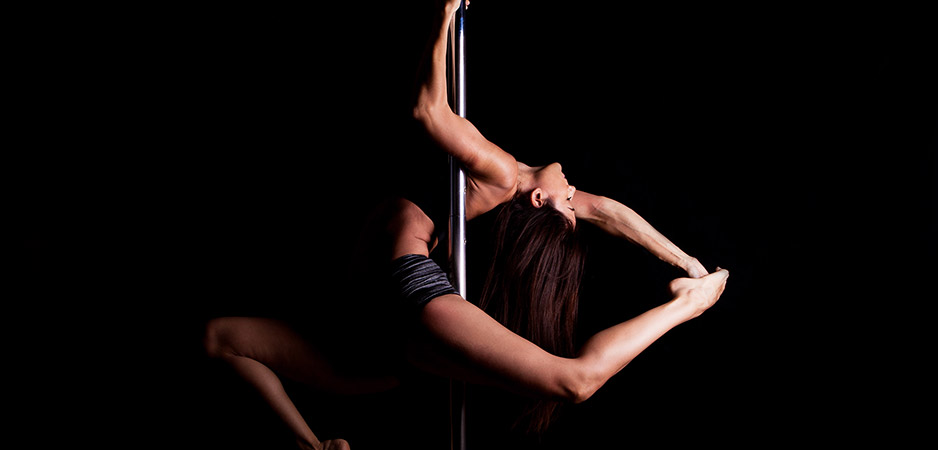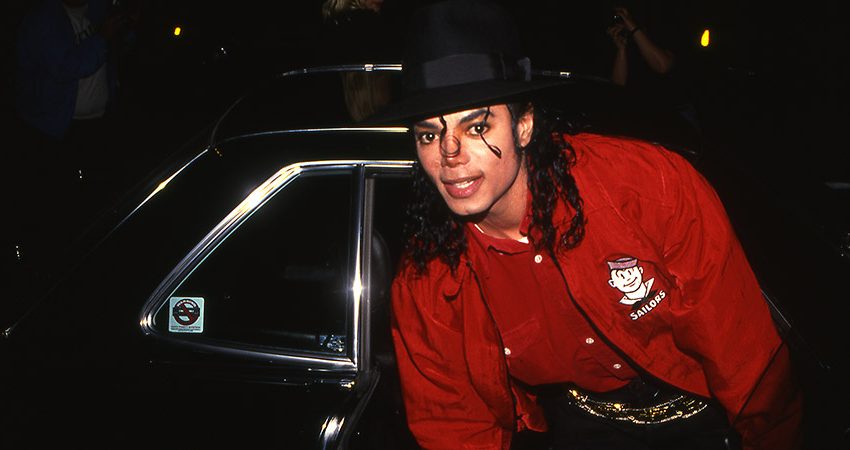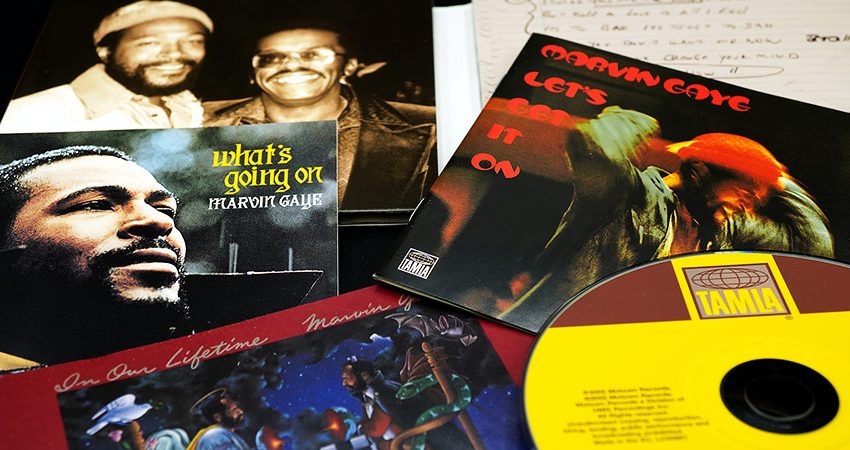By some weird fluke, I may be the most famous male pole dancer in the world this month. Not by any means the best, strongest or most graceful. Maybe the oldest and certainly the most unlikely. Being the opposite of a typical pole enthusiast gives me the perfect stage, in brief, to sing the objective scientific praises of one of the most unscientific, touchy-feely practices that people swear transforms their lives. I feel it is my mission to tell the secret story of how pole dancing (aka “pole”) works wonders on the human form.
The better-known story of pole is of women empowered by owning their athleticism and sexuality. Netflix released a documentary a few weeks ago — “Strip Down, Rise Up,” directed by Michele Ohayon — which tells that story remarkably well.
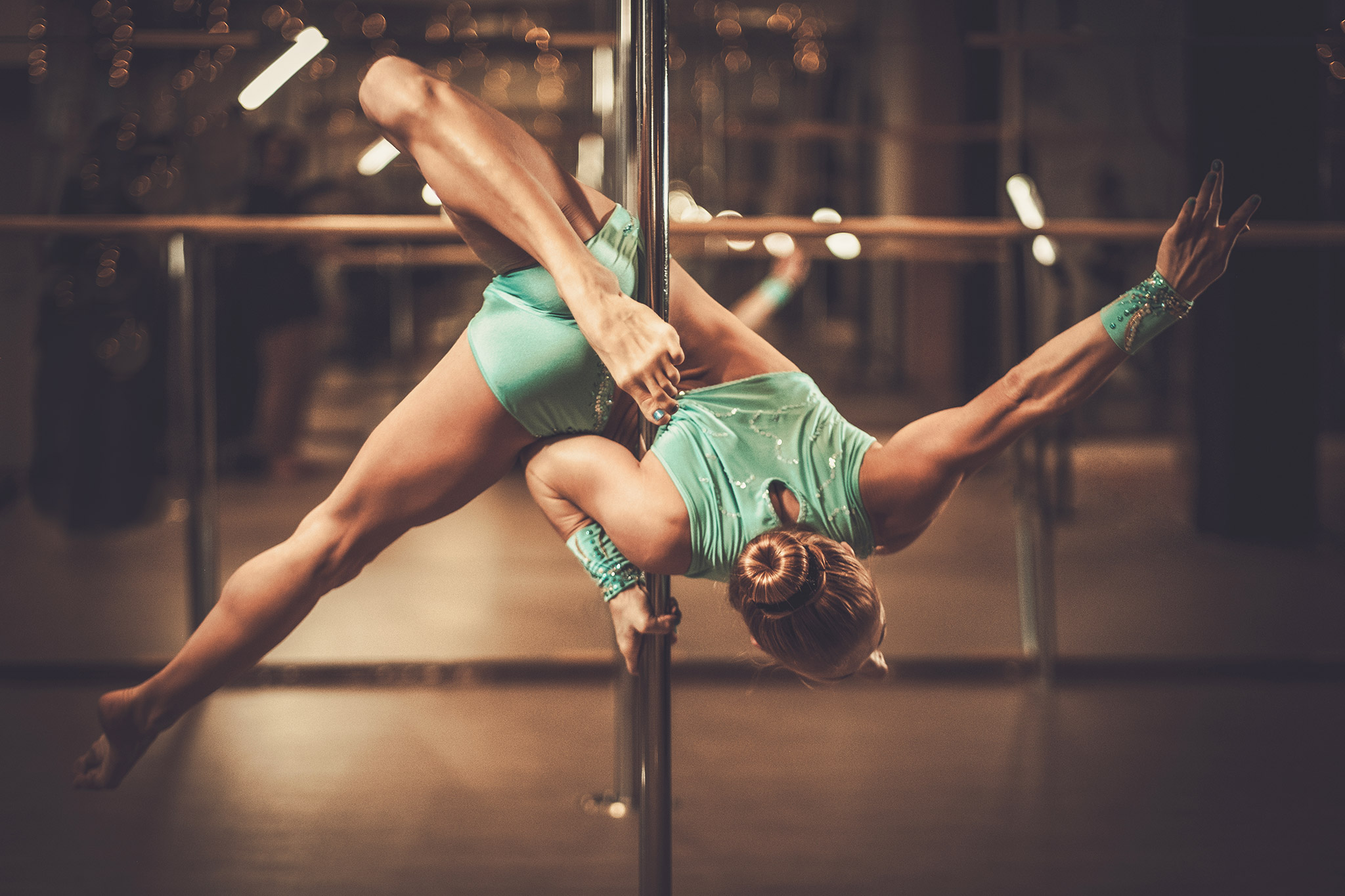
Since I’m not a woman, I can’t speak about transformations in women’s hearts and studios. But having pole danced with and taken lessons from several of the stars in the film over many years, I can vouch that the documentary portrays them and their “pole journeys” better than I could. In person, they can tell you how pole transformed their lives, and you can see how gracefully they move. Everyone thinks they’re younger than they are.
I appear for a few seconds in the film in clips Ohayon shot at the 2017 US Nationals competition. (My performance there with doubles partner Michele Fabrega came third behind two amazing couples half our age.) I’m one of the few males interviewed — briefly while wearing briefs — in a documentary focused entirely on women.
And what a nerdy male voice it is! It sounds exactly like what I write on Amid news, not what you’d hear from a dancer flushed with the rush of performance: “I’m a theoretical physicist and neuroscientist. I do pole to fix my spine.” Yeesh!
The Biophysics of Human Grace
But that awkward, nerdy scientific point is worth considering. Pole does indeed fix spines, and that’s how it makes even middle-aged people more graceful, energetic, sensitive and emotionally calm. The particular socio-physical activity of pole transforms participants’ bodies and nervous systems in the same ways that yoga or Pilates do, only more so. Ask a pole dancer if you don’t believe me.
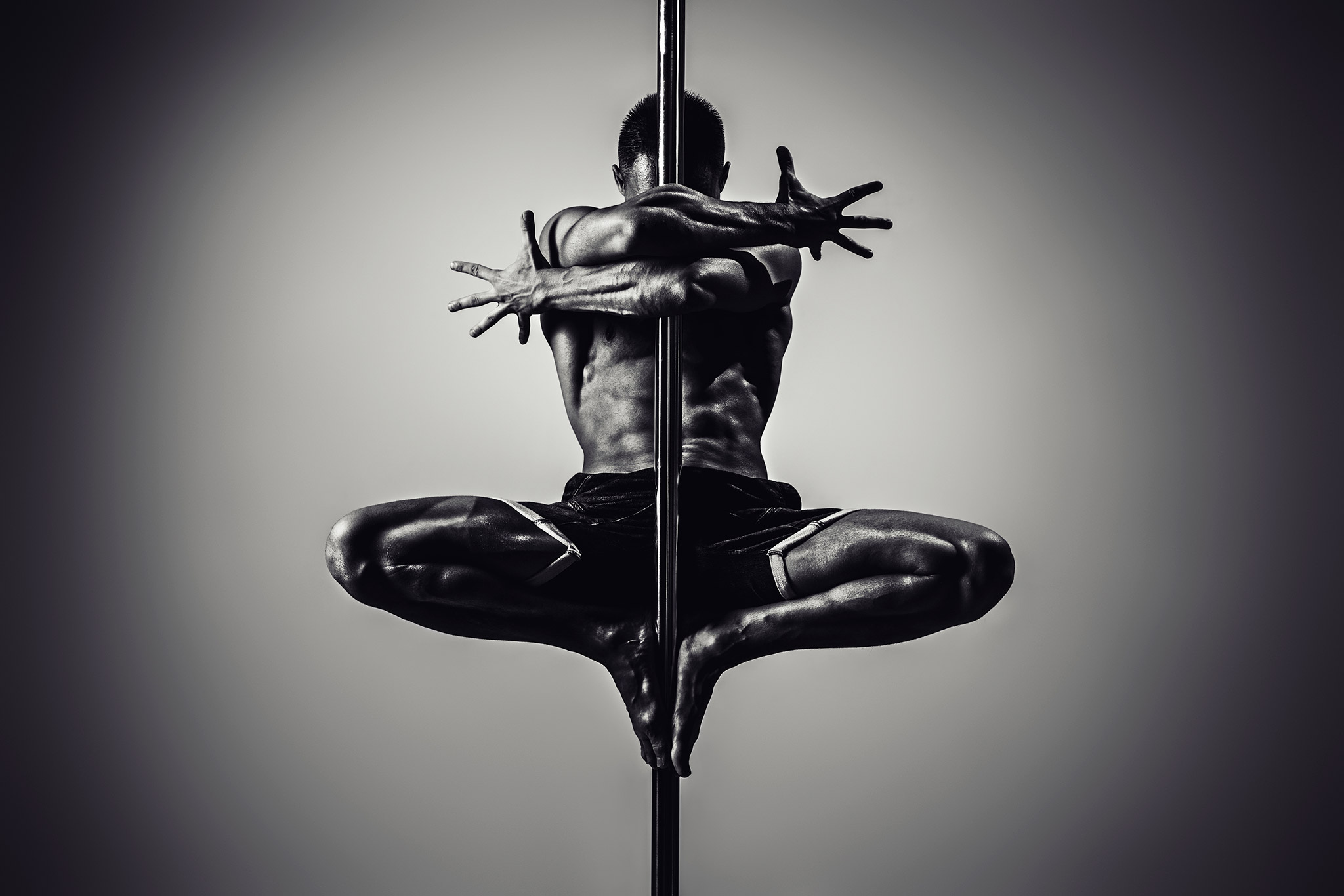
Or better, look at one. Close up, in real life, from the front row, while they strut their stuff. Look especially for subtleties of muscular engagement, for whole-body squads of muscles that elongate in concert, mixing stretching and strength, for a genuine, effortless smile as she floats up past gravity. I challenge anyone to find a more perfectly functioning human. You can see with your own eyes that pole works.
Meanwhile, here below, follow the specific biophysical benefits, arranged as previous my articles in a list. Each point is distinct — and distinct from what other sports offer. Each of them could be a whole essay on its own. The fact there are so many accounts for why pole is a near-perfect physical activity for improving human function. Of those many perfect points, only a few offer room for improvement.
If you’re impatient with detail, the gist is this: The full human neuromechanical hardware/software stack, starting with 500-million-year-old sea-snake spines to hominids climbing trees with friends, faces its fullest challenge doing pole. No other sport comes close to touching as many aspects and angles of our bodies and nervous systems in good ways. Athletes and intellectuals know that a challenge — like discomfort and even pain — is part of what a body needs to thrive. As a general principle, all healthy, challenging full-body activities improve range of motion, strength, confidence, physical sensitivity (“interoception”), physical balance and emotional balance. All come directly from physical recalibration.
What follows is my scientific list of specific benefits. If you find this perspective persuasive, by all means, check out the much larger biomechanical and computational tapestry of which it is an inextricable part. Science and technology indeed have a simple, actionable description of what humans are and what is good for us.

1. Spines Can and Should Wiggle
The function of vertebrate spines, since snakes evolved in the sea, is to wiggle with wavelike undulations. That neuromechanical hardware was in place before fins, before legs, before arms. The best pole dancers can wiggle the tailbone (“twerking”), wave the head, flip long manes of hair and even do body waves aloft. The biomechanical objective, like the expressive one, is to use the spine and breathing to drive the limbs, and not the other way around.
2. Twisting Beats Pushing and Pulling
When spines evolved 500 million years ago, in sea snakes, their highest-leverage motions were twists, not bends. That is still true of all spines. Twisting the spine intensely is very good for us. But we humans spend more time exercising our arms and legs, mostly because it’s easier to apply force with them. Weight machines in gyms that twist the body, for example, are rare and hard to use compared to things you push and grab.
Poles change that. Many pole poses (like “ballerina”) actually support your body weight by twisting your spine around the pole, forcing the spine to exert a full-body twist and feel the results on itself. That’s like a weight machine for snakes.
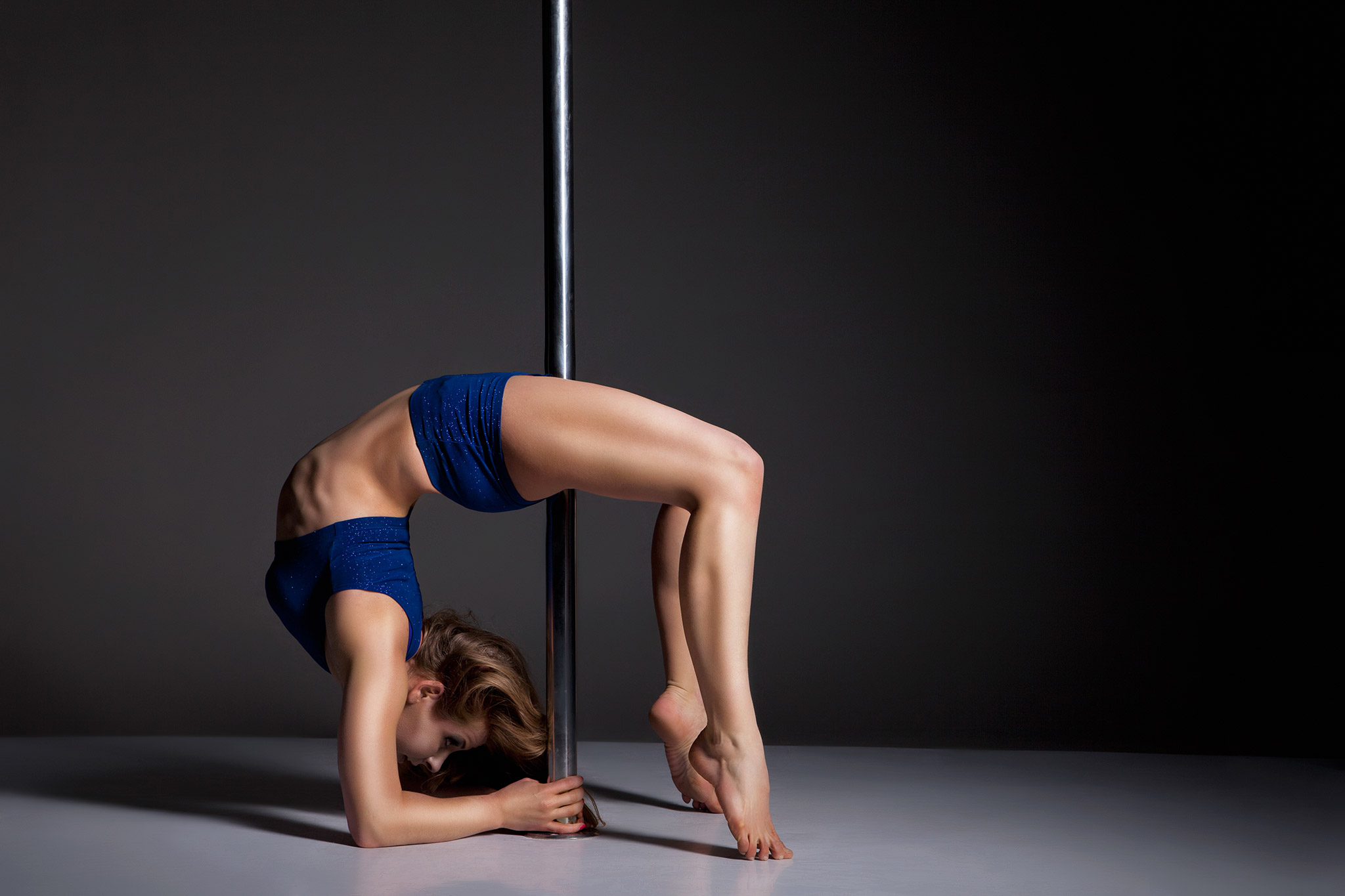
3. Spinal Traction and Hanging Makes Us Feel Good
Since our ancestors once climbed trees, our spines enjoy being tugged straight, and they benefit from it — like “cracking the back.” Chiropractors get paid for doing that, but poles do it for free whenever you hang. Furthermore, if you are hanging inverted, head-down suspended by the squeeze of your thighs, your spine is both exerting and tugging in ways no chiropractor could ever manage.
4. We Need Play and Reciprocal Purpose
Our species evolved to spend all day, every day, clambering around with our fellows like chimps, trying things out and sharing advice. A pole dance studio during open-practice hours is like that, like a playground. Learning new tricks, practicing routines, stretching while you watch everyone else, offering suggestions and congratulations. And, of course, dancing for and with each other for fun.
5. We Need to be Seen
For the first million years, before inventing shelters and clothes, our primate ancestors saw and touched each other’s bodies at close range all day. That constant carrier wave of visual and mechanical interaction underlay the collaborative instincts that kept those tiny kin groups alive against steep odds. Ancient and modern people alike thrive on seeing other people, the more of them the better. Perhaps the only exposure better than sitting front row in a pole showcase or competition, watching every shape and age of body show off its self-rediscovery close up in skimpy clothes under bright lights, is to be one of many strong bodies doing that same thing together, being seen and seeing simultaneously.

6. We Can and Should Climb “Trees”
Before our ancestors walked upright, but after they stopped walking on all four legs, they climbed trees. If you watch a monkey or ape swing branch to branch, you see the creature’s body weight suspended where the inner shoulder blade attaches to the spine, so the animal can swing efficiently with little effort or fatigue. The best pole dancers have nearly that same ability: holding on with just one arm, they can swing around the pole for many revolutions, the spine centrifugally straightened like a tetherball on a rope.
Dance poles themselves are like idealized tree limbs in three ways. First, their width (typically 45mm) is exactly the right size for most human hands to get the best grip. Second, that width is exactly uniform along the entire length, so one can grasp the pole above and below, even without seeing it, confident of where it will be and how it will feel. No natural branch is like that. Finally, the pole is made not just of strong metal, but of a specific metal (brass, chrome or stainless steel) and a special polish (mirror grade) known to maximize traction of skin on metal, so you don’t slip off.
7. Yoga Cubed
However wonderful yoga is (I just became an instructor), it is limited to the surface of a mat. Pole has everything that yoga does. In fact, pole uses yoga poses in warm-ups and routines. Pole also has a vastly wider floor area to play with and more things — like cartwheels — to do on it. Best of all, the pole itself literally brings in a whole new dimension: the third dimension above the plane, the “Z-axis” skewering the X and Y of a flat mat. Even keeping your feet on the floor, having a pole at hand (so to speak) adds a brand-new dimension to yoga and stretching poses because you can lean on it, pull against it, hook an elbow or knee, etc. And, of course, climbing the pole and wrapping around it offers an entirely new physical geometry for recalibrating the body. If nothing else, a pole is the perfect “yoga prop.”
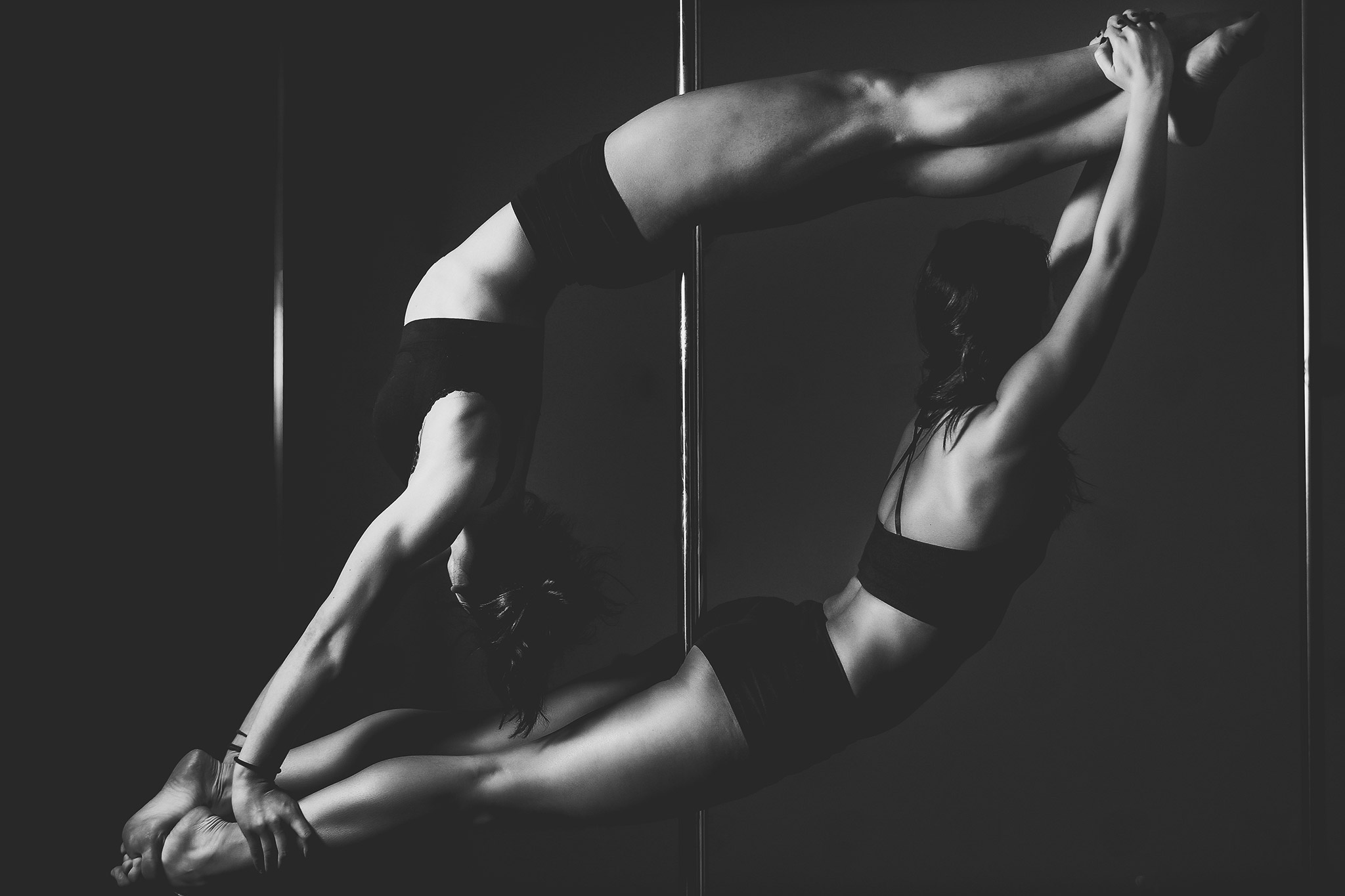
8. Weird Positions and Torques Comprise “Motor Entropy”
“Entropy” is the official term for the information carried by diverse combinations of pretty much anything. So, the “motor entropy” of an activity describes all the different arrangements of hands, elbows, knees, neck, twisting, torquing, pushing, pulling, splitting, suspending and spinning that a body can do. No other sport can push and pretzel a body in so many different ways, which means no other sport can provide a greater variety of the training data a healthy body needs. Learning to deal with diversity in all its forms is what learning is for. Learning helps us conquer uncertainty and fear.
9. Fear of Death Motivates
Imagine hanging upside down meters above a hard-wood floor, suspended only by your burning inner thighs squeezing the metal pole for dear life. Imagine how the visceral fear of imminent death motivates a very strong grip, in spite of the pain. Over years, I’ve never seen anyone fall.
10. Parasympathetic Expression and Flow
Of course, any pole activity can be treated as just an exercise, and not a dance expression. But in its highest calling, the spine expresses itself directly, as our ancestors have danced around fires for a million years. Then, the body is not following remembered instructions using the sympathetic nervous system (evolved for sudden problems), but in a state of spontaneous flow, employing the parasympathetic system evolved for continuous, real-time use. Dance is most beneficial to the dancer when the motions and emotions are spontaneous.
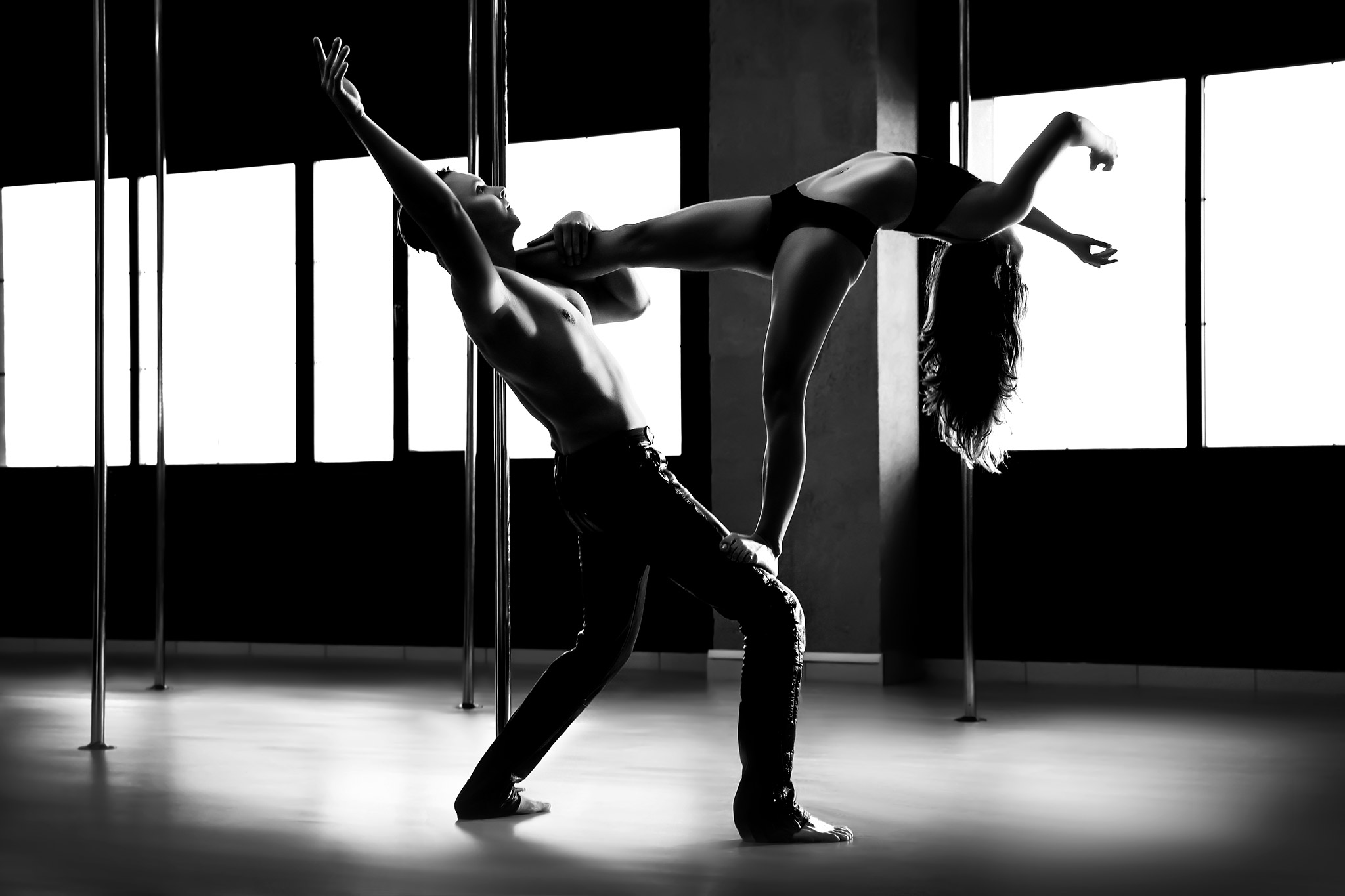
11. “Grounding” Way into the Ultrasonic
It’s well-known that one can calm the nervous system by breathing and meditation exercises. It’s less well-known that pressing parts of the body (especially its sore bony spots) against heavy stone or metal can accomplish the same thing. The principle is simple: The dense, uniform object provides a low-vibration “reference signal” to help the brain know what zero vibration is supposed to feel like. That gives the brain a tangible target when reducing body tremors, so it can calm the nervous system. The harder and heavier the object, and the less squishy stuff between it and bone, the higher into the high-bandwidth, ultrasonic zone the calibration can go — and the better it works.
Just touching something as unyielding as a solid metal pole helps recalibrate and realign. It can be a meditative practice to press the forehead, sternum, tailbone or entire backbone against the metal and wait for the body to adapt to it.
12. Only a Well-Tuned Hand Can Hold a Spinning Thing
I have always been amazed that the skill of swinging around the pole by one hand (which took me eight years to learn, in spite of so-called “strong” hands) can often be done by teens and even many adults on their very first try. That’s because that particular unnatural ability — to strongly squeeze a smooth cylinder while it spins — is the opposite of ordinary hand strength in several ways.
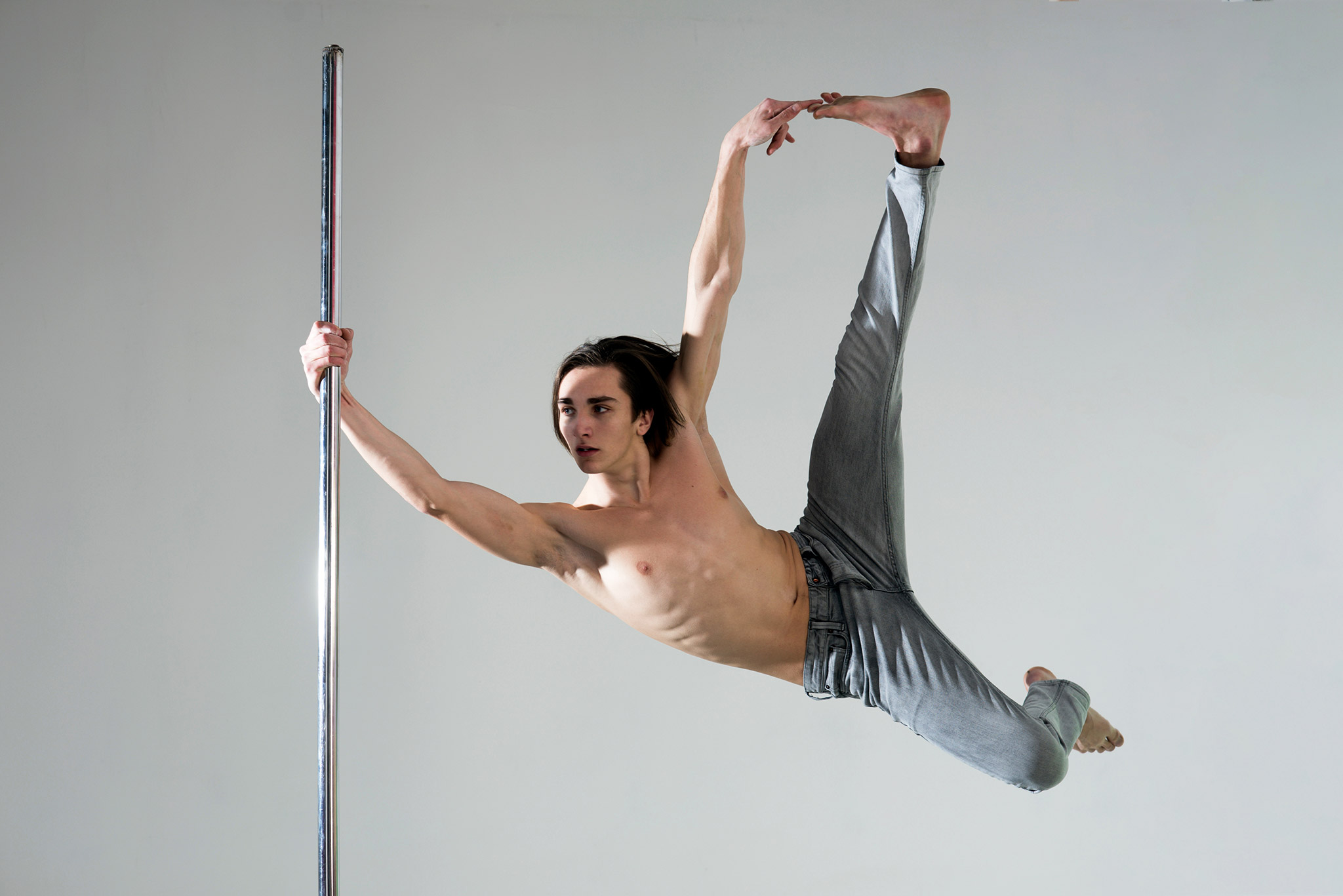
First is the angle of the hand, which when spinning around the pole wraps more like a spiral frond than a clamp, and squeezes together the sides of the thumb and index finger (“lobster claw”) instead of regular grasping. Then there is the moving surface contacting skin, which prevents the nervous system from its usual trick of locking in its ultrasonic tactile sensors to the surface micro-texture. That difficulty makes it much harder to feel just how the hand is engaged. Hard but not impossible, obviously. A sufficiently youthful, graceful, uncrusty nervous system, such as that of a teen or a dancer, still has its native tactile bandwidth and range, and thus its native ability to swing like a monkey or even better.
13. Spinning Makes You Pay Attention Differently
The spinning challenge above happens when the pole stays still and the dancer spins. There is another way to spin. Few non-polers know that dance poles can also be set to spin in their mounts with ball-bearing smoothness (and with near invisibility, since a shiny spinning pole still looks still).
As soon as one is spinning with the pole, you have to focus on it while letting the room spin around you. As with playground and amusement park rides, spinning constantly for a couple of minutes can make you feel dizzy (some pole studios offer ginger candies to alleviate nausea). But by the same token, spinning is also exhilarating (as children prove daily) and a potent form of fresh, unusual sensorimotor data, as with the rest of pole.
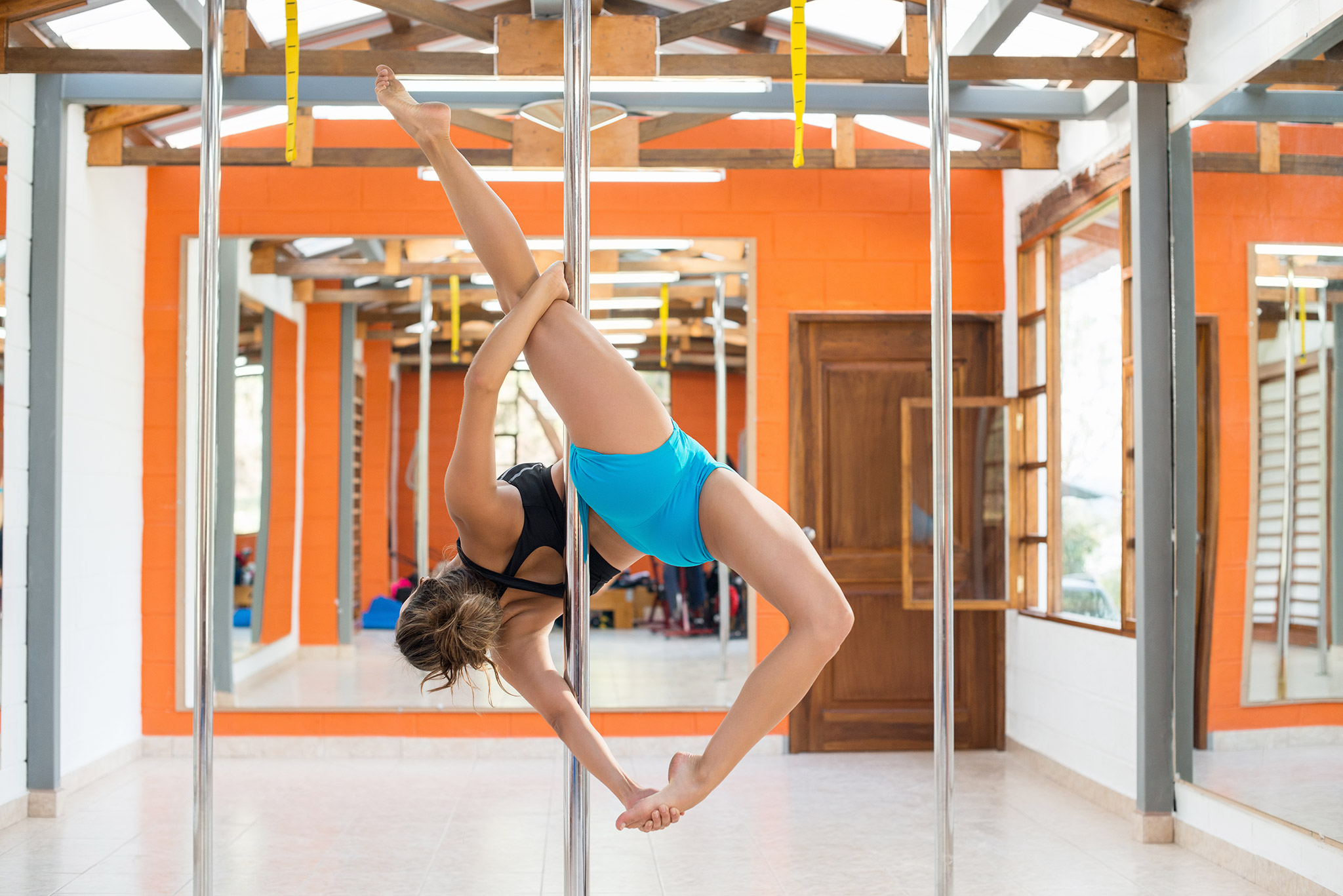
14. Warped Gravity Challenges Interoception
Spinning pole is weird, but even weirder is that it twists gravity. As with spinning ballerinas, the farther from the axis of spin, the more outward force. That extra sideways force makes it easier to hold on, but it also means the felt “force of gravity” bends inside your body by about 30 degrees. That warped gravitational field is hard to notice if arms and legs are both touching the pole. However, if as one spins, the legs and torso swing free, then trying to move or shake them feels weird and confusing — but weird and confusing in exactly the way that challenges and awakens one’s nervous system. Feeling comfortable on a spinning pole is the mark of a master and usually also of a graceful, symmetric and physically-aligned body.
15. Self-Awareness Moves From Physical to Spiritual
In the language of the nervous system, “sense of self” translates to interoception, or internal self-awareness in the most general sense, from the prick of a pin or pop of a knuckle up to the kind of soul-quenching transcendence sometimes induced by spine– and breathing-intensive activities. Many of the most fluid dancers report ecstatic states, such as time not merely stopping but ceasing as even a concept. The frequency with which such experiences occur (I enjoy them frequently myself) not only means that people can better appreciate the benefits of pole, but also that science finally has a playground/laboratory where physical mechanics intersects with spirituality and where human physical perfection can be understood and trained.
16. Female Energy
The documentary didn’t make the above points because it didn’t make points — it told stories. In particular, it told the stories of women whose victimization by men — by a girls’ athletic coach, by male porn consumers and by a man who thought pole was a sinful activity for his wife — was remedied by the practice of pole dance itself.
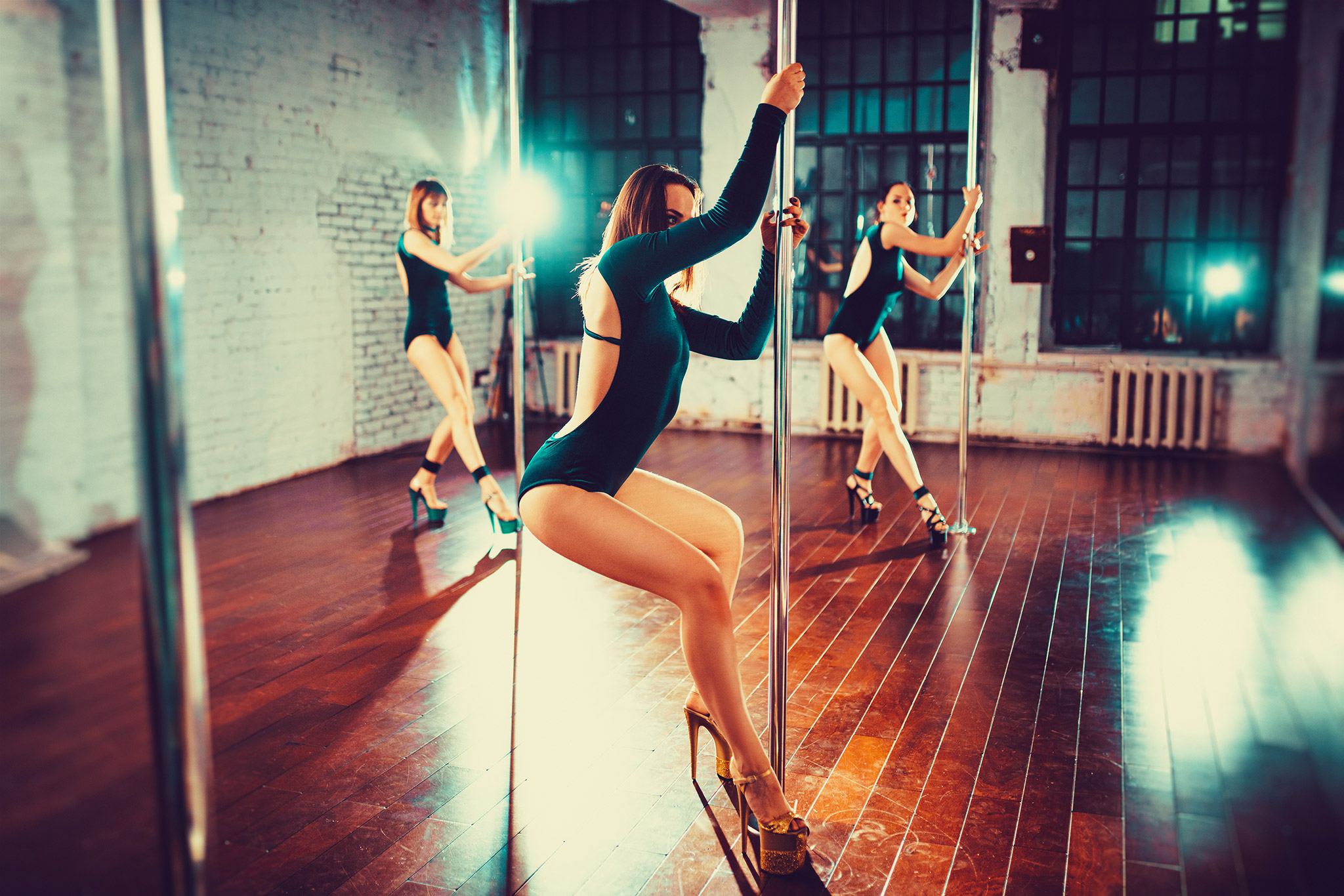
Healing sex-related abuse by males works best with men removed, for obvious reasons. So, of course, I’m never in such studios myself, but I have met many amazing women who have, so I’m certain there’s female magic involved. As a biologist, I’ll call it resonant social vibrations.
17. Pelvic Pleasure
Practicing pole works the pelvis, the most mistreated zone in modern bodies, in two ways. One is mechanical and the other is sensual.
Mechanically, pole stretches and opens the hips like ballet or yoga, but even more so, involving not just stretching but strength and unusual angles. Often, a pole pose supports the entire body through one or two hip joints, sometimes upside down or sideways.
But what makes husbands disown charming, graceful wives over pole is that pole started in strip clubs, and tricks named after professional strippers are taught in studios everywhere. Moreover, much of the personal transformation work involves not just athleticism, but also owning one’s sensuality and sexuality, in particular by enjoying sexy sensations while dancing.
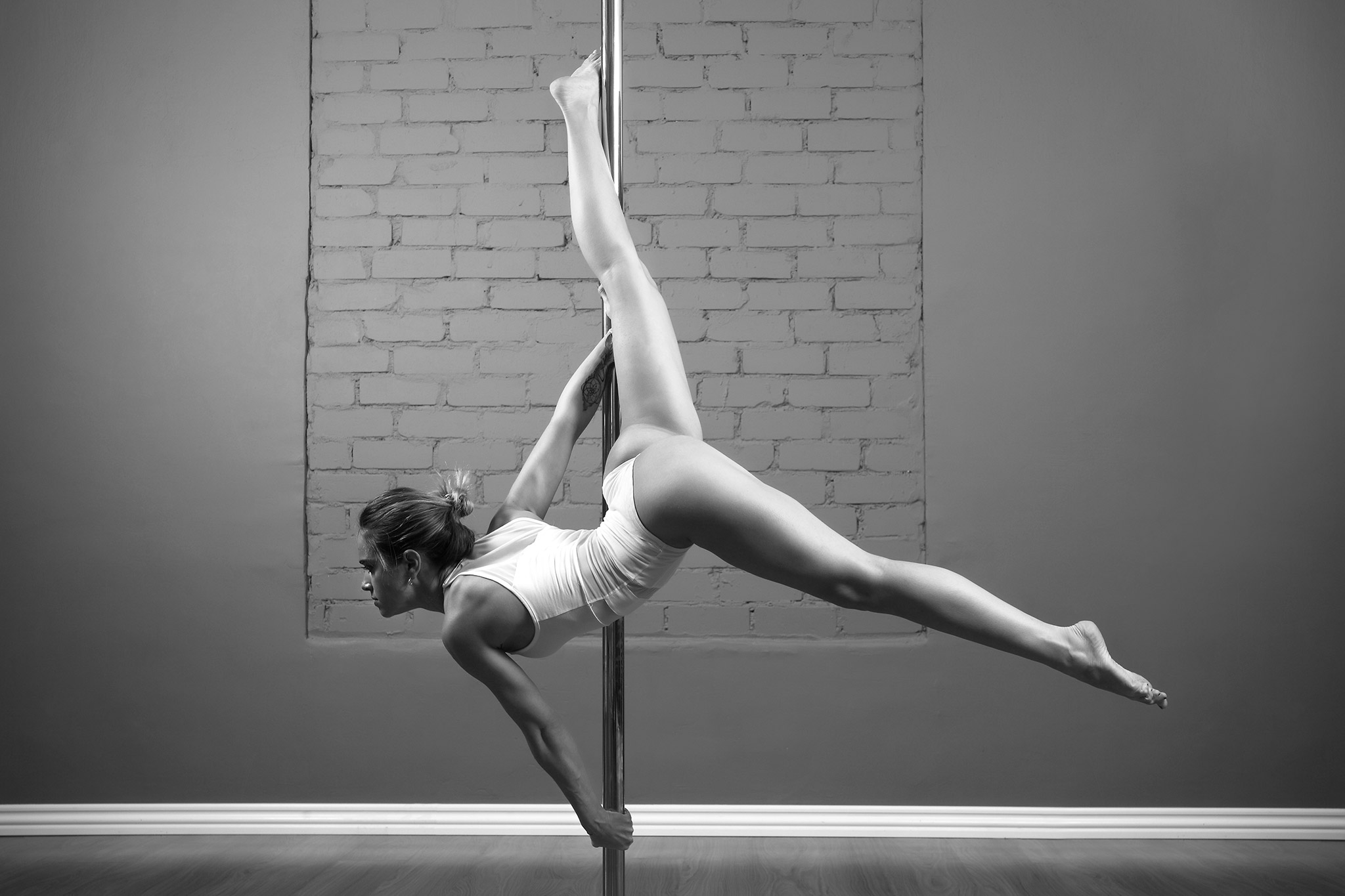
I know of nowhere else in modern society that people are invited to feel sensual in a social group. Those are two of the most powerful primate affections.
For millions of evolutionary years, sensuality was central to social experience and bonding. So, that’s what our bodies evolved to expect and want. That quintessential primal urge is suppressed by civilization. But only buried, not yet removed… give us another few million years.
So, of course, pole’s social sensuality is psychologically potent. But by the same token, that deeply physiological vulnerability can trigger reactions, sometimes aimed at similarly vulnerable men who happen to be nearby. Here is a philosophical conundrum unique to pole, at the nexus of two unlikely nouns “body shame” and “dance belt.”
The sexiness-related asymmetry in pole between female and male (and more so heteronormative male) is both the sport’s pride and its flaw. Countless women have been helped by using pole to recover from things men did. But single-sex classes for men don’t work in the same way and coed classes rarely even try.
The one other problem with pole — at least in America — is a business model opposed to pole’s deepest social benefits. The business model is teaching classes. So, a would-be dancer must enroll as a student, go to a scheduled class, pay a lot of money and spend an hour or more taking instructions and trying to learn new things.
But primates like us didn’t evolve to take lessons. We evolved to freely dance and play (see points 4, 5, 15 and 16 above), and that’s what drives us to pole in the first place. Many pole dancers love to dance freely in groups, but that option is seldom offered because it doesn’t make as much money as classes. Money, and the market differentiation it imposes, force studios and instructors to compete. And money separates students from instructors and from each other. Our species has danced 10 times longer than we’ve talked. What if people just want to dance?
From my perspective, pole is factually and scientifically a near-perfect way for people to upgrade not just their whole bodies, but their nervous systems and even spiritual lives. Furthermore, that fact provides yet more evidence for a mathematical, neuromechanical perspective on human function that has many other successes already. The sport is magnificent, the documentary “Strip Down, Rise Up” is magnificent and the science explaining why it’s magnificent is magnificent. Together, the message is simple: Humans really need climbing and physical fun.

